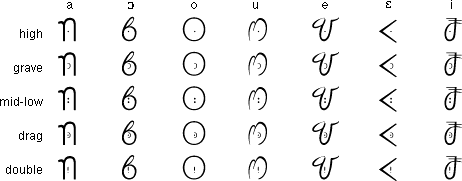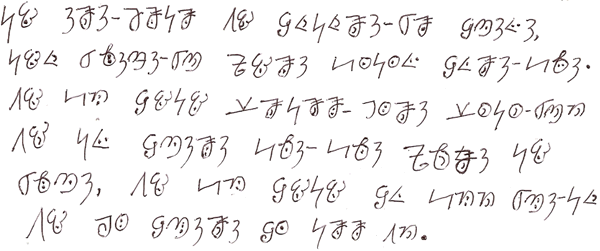In the 1900s, a Bassa by the name of Dr Flo Darvin Lewis discovered that former slaves of Bassa origin living in Brazil and the West Indies were still using the Bassa alphabet. Dr Lewis had not encountered the alphabet before and, after learning it himself, he decided to try to revive the alphabet in Liberia.
Dr Lewis obtained a PhD in Chemistry at Syracuse University, then returned to Liberia via Dresden, where he commissioned a company to manufacture the first ever printing press for material written in the Bassa alphabet. In Liberia he set up a school to teach the Bassa alphabet.
Originally the Bassa alphabet was written on slates with charcoal, and the writing could be easily erased with a leaf known as yan. People began to write with pencils in the early 1940s. The original writing direction was boustrophedon (alternating between right to left and left to right, but the alphabet has been written from left to right since the 1960s.
Today the Bassa Vah Association promotes the use of the Bassa alphabet.
Notable features
- Bassa in a tonal language. Tones are marked using a system of dots and dashes which appear inside the vowel letters.
Used to write:
Bassa, a Kru language spoken by about 350,000 people in Liberia and by about 5,000 people in Sierra Leone.Bassa alphabet

Bassa tones

Thanks to Rev. Joseph Gbadyu, Varnie N'jola Karmo and Mattias Persson for information on the Bassa alphabet.
Sample text

Transliteration
Sample text and transliteration by Peter Gorwor from Liberia
Translation
All human beings are born free and equal in dignity and rights. They are endowed with reason and conscience and should act towards one another in a spirit of brotherhood.(Article 1 of the Universal Declaration of Human Rights)
Tower of Babel in Bassa
Links
Information about the Bassa language and alphabethttp://en.wikipedia.org/wiki/Bassa_language
http://www.uniboa.org/bassalanguage.html
http://gwek.tripod.com/Bassa_Studies
Online Bassa dictionary
http://cefliberia.org/extras/Bassa%20Dictionary.htm
Bassa fonts
http://www.reocities.com/jglavy/african.html









.jpg)
.jpg)

.jpg)





0 comments:
Post a Comment
Note: Only a member of this blog may post a comment.